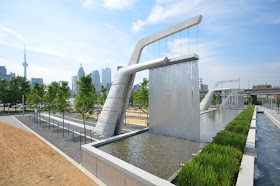As more researchers burrow in to the idea of economic mobility, the Equality of Opportunity Project (led by four economists, two from University of California-Berkeley and two from Harvard) has ranked the 100 largest U.S. cities on the economic mobility of children, looking specifically at the odds of a child reaching the top fifth income group if he or she started life in the bottom fifth. Here's a link to the rankings.
The big news for those of us in the Carolinas is that our two states are propping up the bottom of the list.
Four of the bottom five cities are in North Carolina. Another is Columbia, S.C. In order, starting at 100, are Memphis, Fayetteville (N.C.), Charlotte, Columbia, Atlanta, Greensboro, Detroit, Raleigh, Indianapolis, Columbus. Greenville (S.C.) is No. 11 from the bottom.
The study looked at "commuting zones" for cities, which is a different regional configuration than looking at Metropolitan Statistical Areas or just at city limits.
As this Salon.com article ("Class warfare in Dixieland") notes, the bottom of the list is dominated by Southern cities. It doesn't point out that all six of the Carolinas cities in the study are scraping the bottom of the list.
The big question - why? - is not addressed in the research. Theories abound, including in the Salon.com article.
The big news for those of us in the Carolinas is that our two states are propping up the bottom of the list.
Four of the bottom five cities are in North Carolina. Another is Columbia, S.C. In order, starting at 100, are Memphis, Fayetteville (N.C.), Charlotte, Columbia, Atlanta, Greensboro, Detroit, Raleigh, Indianapolis, Columbus. Greenville (S.C.) is No. 11 from the bottom.
The study looked at "commuting zones" for cities, which is a different regional configuration than looking at Metropolitan Statistical Areas or just at city limits.
As this Salon.com article ("Class warfare in Dixieland") notes, the bottom of the list is dominated by Southern cities. It doesn't point out that all six of the Carolinas cities in the study are scraping the bottom of the list.
The big question - why? - is not addressed in the research. Theories abound, including in the Salon.com article.















